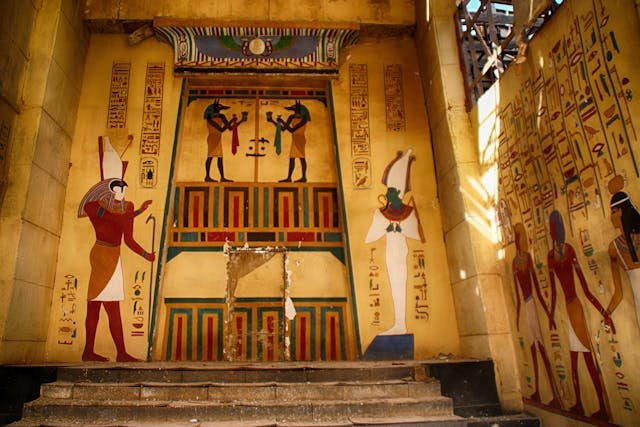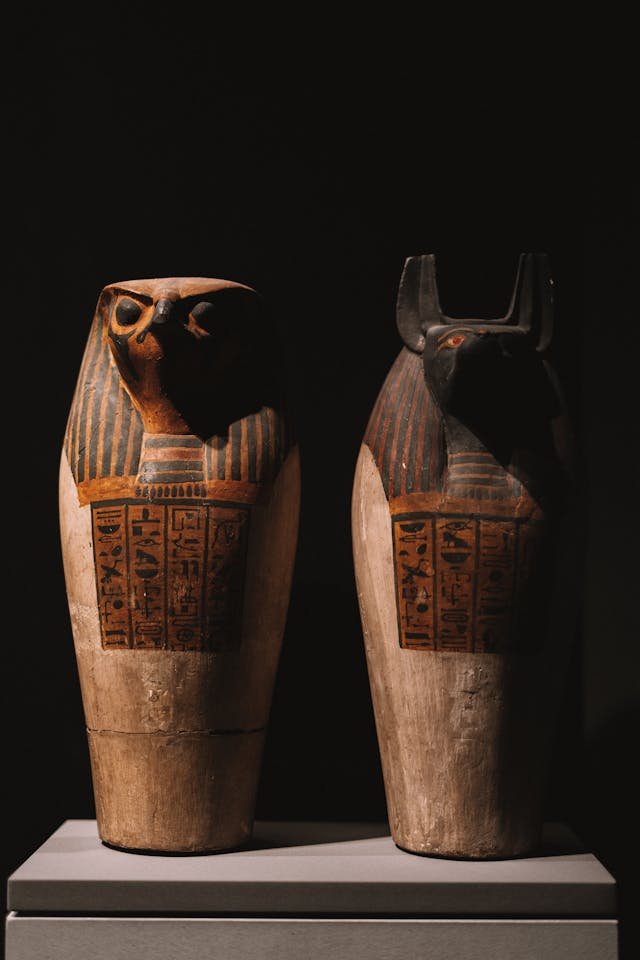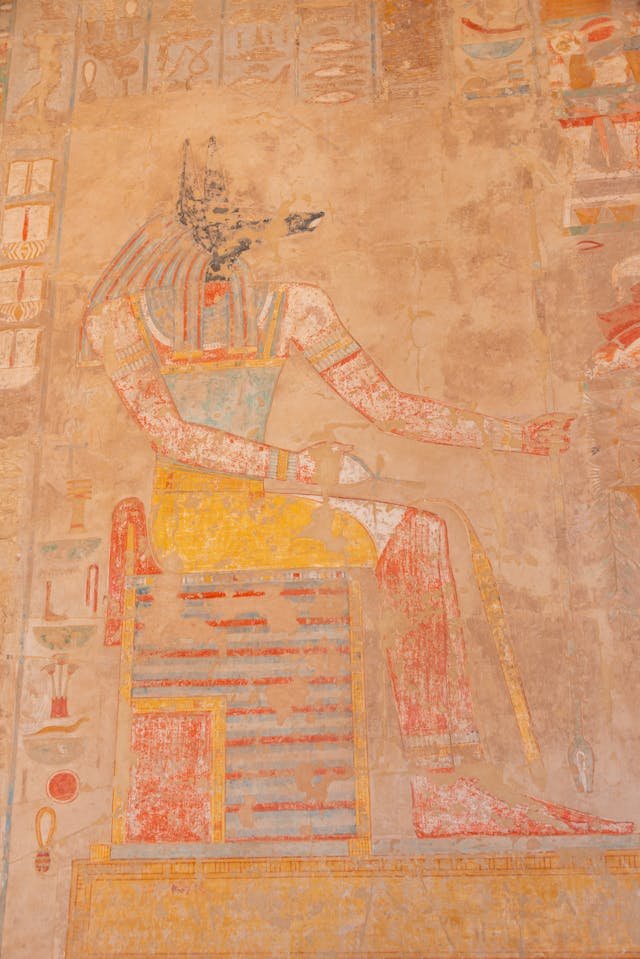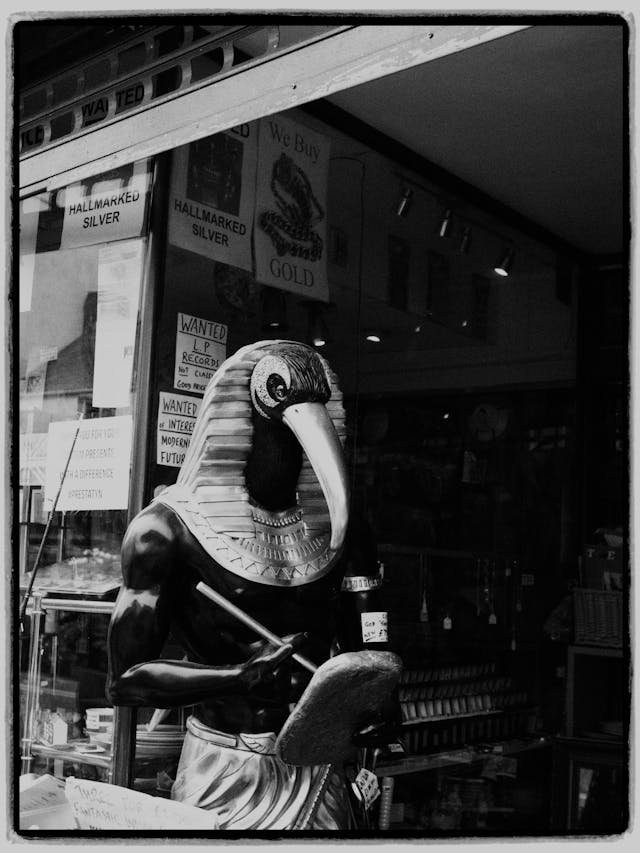
Ancient Egyptian god statues are powerful symbols that reflect the deep spiritual beliefs of one of the world’s oldest civilizations. These statues show gods and goddesses in human and animal forms, made from materials like stone, gold, and wood. They held religious, political, and cultural meaning in everyday Egyptian life.
What were ancient Egyptian god statues?
Ancient Egyptian god statues were carved or molded figures that represented gods and goddesses worshipped in Egypt thousands of years ago. These statues were very important in temples, tombs, and homes. People believed the gods lived through these statues, so they treated them with great care and respect.
These statues were not just for decoration. Egyptians thought their gods helped with things like health, farming, love, protection, and the afterlife. So, they created these statues to talk to the gods, give them offerings, and ask for help. Each god had a unique look, and their statues showed symbols connected to them, like animals, crowns, or tools.
The size of the statues varied. Some were small enough to hold in your hand, while others were huge and placed in big temples. They were made from many materials depending on the purpose and wealth of the person or place.
Why did Egyptians make god statues?
Egyptians made god statues to honor, worship, and connect with their gods. They believed these gods controlled every part of life and death, and by making statues, they could invite the gods to be present in a physical form on Earth.
In temples, statues were placed in special rooms called sanctuaries. Only priests could go there, clean the statue, and give it food, perfume, or clothes. It was part of a daily ritual to keep the god happy. People believed that if they cared for the statue well, the god would bring peace and good luck.
In homes or tombs, smaller statues were used for personal prayers. Families kept statues of favorite gods to protect them or help with certain needs. In tombs, statues helped guide the soul to the afterlife and gave power to the dead.

Which gods were most common in statues?
Some gods appeared more often in statues because they were more important or loved by the people. Here are a few well-known ones:
1. Osiris – God of the afterlife. He is shown as a mummified man with a crown and a crook and flail in his hands.
2. Isis – Goddess of magic and motherhood. She often wears a throne-shaped crown and spreads her wings.
3. Horus – God of the sky, seen as a man with a falcon head. He protected the pharaoh.
4. Anubis – God of mummification, with a jackal’s head. He guided souls in the afterlife.
5. Thoth – God of writing and knowledge, shown with the head of an ibis or a baboon.
6. Bastet – Cat goddess of home and love. Often shown as a woman with a cat’s head or just a cat.
These statues helped Egyptians feel close to the gods they respected and needed help from the most.

What materials were used for the statues?
Egyptians used many materials to make god statues. The type of material depended on where the statue would be placed and who made it. The materials also had special meanings.
Stone was very common. Limestone, granite, and basalt were used in temples and tombs. These stones were strong and lasted a long time.
Gold and precious metals were used for royal statues. Gold was linked to the gods and was believed to be the skin of the gods, especially the sun god Ra.
Wood was easier to shape and cheaper, so many home statues were made from it. Some were painted or covered with gold leaf.
Faience and clay were used for small statues and amulets. These materials were colorful and easy to mold.
Artists often painted the statues in bright colors. Black meant the afterlife, red meant power, and green meant growth and rebirth.

Where were these statues placed?
God statues were placed in many places across ancient Egypt. Each location had a special reason:
Temples – This was the main place for god statues. The largest and most beautiful ones were kept here. Only priests could care for them. These statues stood in the deepest, darkest part of the temple.
Tombs – Statues placed in tombs were meant to help the dead person in the afterlife. These included gods of the underworld and guardians.
Homes – People kept small statues at home for personal prayers and protection. These were simpler than temple statues but still meaningful.
Public places – Some huge statues stood outside temples or along roads to show power and welcome visitors.
These statues created a deep link between daily life and the divine world.
What did these statues look like?
Ancient Egyptian god statues had very special designs. They combined human and animal parts to show what the gods stood for. These shapes helped people know what each god did.
Most gods had human bodies with animal heads. For example, Anubis had a jackal head, and Horus had a falcon head. This mix showed both godly power and human connection. Some gods looked fully human, while others were full animals, like Bastet as a cat or Sobek as a crocodile.
They also wore crowns, held objects like scepters or ankhs, and had different poses. Some stood tall, while others sat on thrones. Every detail had meaning, from how the hands were placed to what they wore.
These statues were not random; they followed strict rules and showed respect to the gods’ roles and powers.
How were the statues made?
Making statues of gods was a sacred job. Artists had to follow special steps and sometimes even religious rituals before and after carving the statue.
First, the artist would choose the right material. Then they would sketch the statue design on stone or wood. Using tools like chisels and hammers, they carefully carved the shapes. Every curve and symbol had to be right.
After carving, the statue was painted with natural colors. Some were covered in gold leaf. Eyes and details were added last. Once finished, a priest often “opened the mouth” of the statue in a ritual to give it spiritual life.
These steps took time and great skill, especially for larger or temple statues.
What did statues mean for the pharaohs?
Pharaohs were seen as god-kings, and statues helped show this connection. They often had their own statues placed beside gods in temples to show they were chosen by the gods or even part of them.
Some pharaohs built huge statues of gods with their faces. Ramses II, for example, made statues of himself as Osiris to link himself with the god of the afterlife. These statues helped show power and divine rule to the people.
Pharaohs also gave god statues as gifts to temples, helping build trust with priests and gain blessings for their rule.
Do any god statues still exist today?
Yes, many ancient Egyptian god statues still exist and are kept in museums around the world. Some are still in Egypt at places like the Egyptian Museum in Cairo, Luxor Temple, and Karnak Temple. Others are in places like the British Museum, the Louvre, and the Metropolitan Museum of Art.
Most are very old but still look amazing. These statues help us understand ancient beliefs, art, and culture. They are protected now, so future generations can learn from them too.
Conclusion
Ancient Egyptian god statues were more than just art. They were holy objects filled with deep meaning. Egyptians believed these statues gave life, protection, and connection to the gods. Found in temples, tombs, and homes, these statues were part of daily life and death. They showed the deep respect Egyptians had for their gods. Today, these powerful symbols continue to inspire and teach us about a world where gods walked among humans through stone, gold, and wood.
FAQs
What was the role of priests with god statues?
Priests played a key role in caring for god statues. They performed daily rituals like washing, dressing, and feeding the statue. These acts were seen as keeping the god happy and present. Only high priests could enter the temple’s inner room, where the main statue was kept.
Are there any missing or stolen Egyptian god statues?
Yes, over time, many god statues have been stolen or lost due to tomb robbing and war. Some statues appear in illegal markets or private collections. Egypt and international groups work hard today to return these statues to their rightful place in museums and temples.
Can people today make god statues like the ancient ones?
Yes, modern artists and archaeologists can recreate ancient god statues using old tools and methods. These replicas are used in museums or teaching. However, they are not worshipped like before. Making them helps us understand ancient art and religion better.
